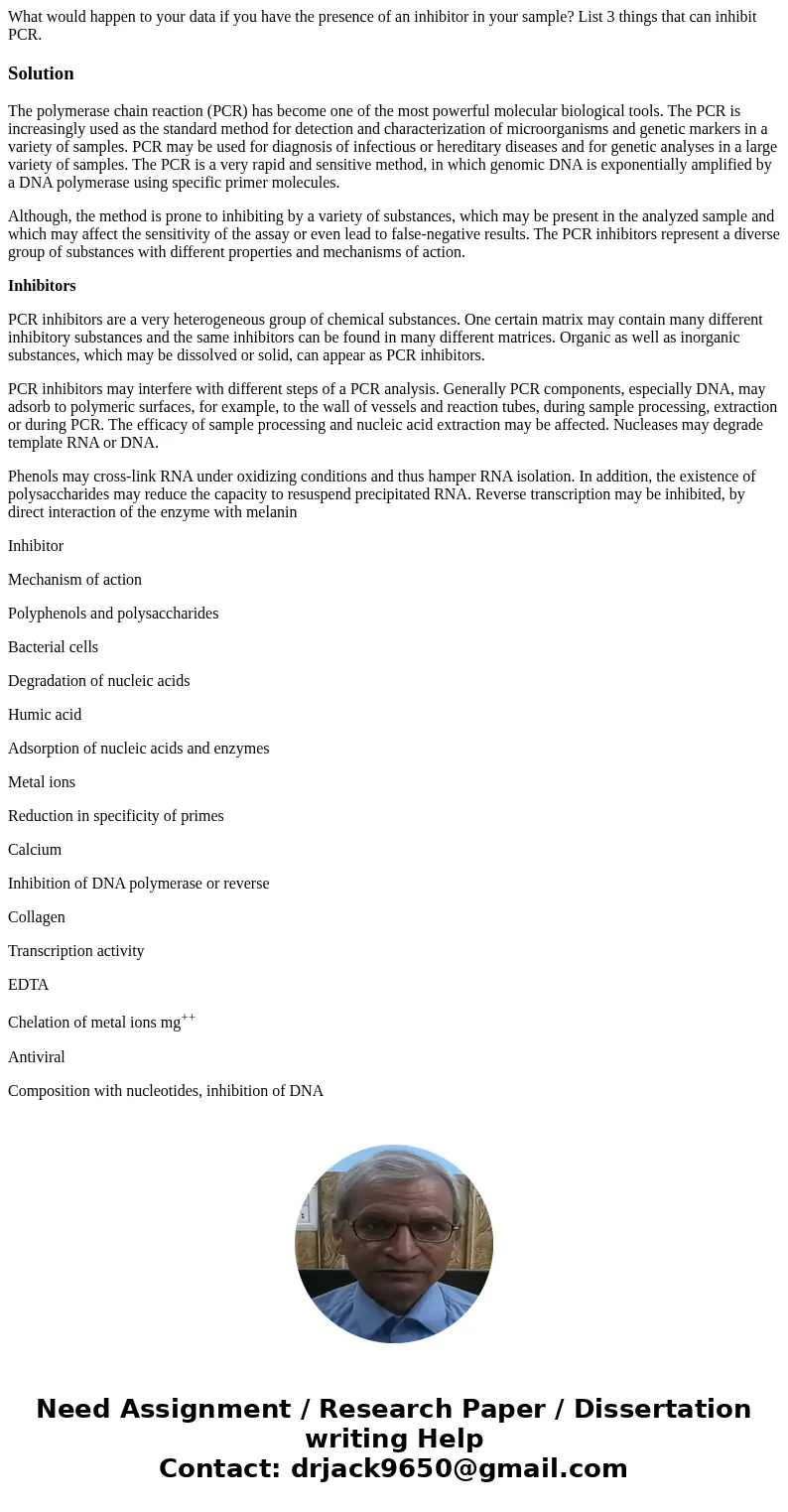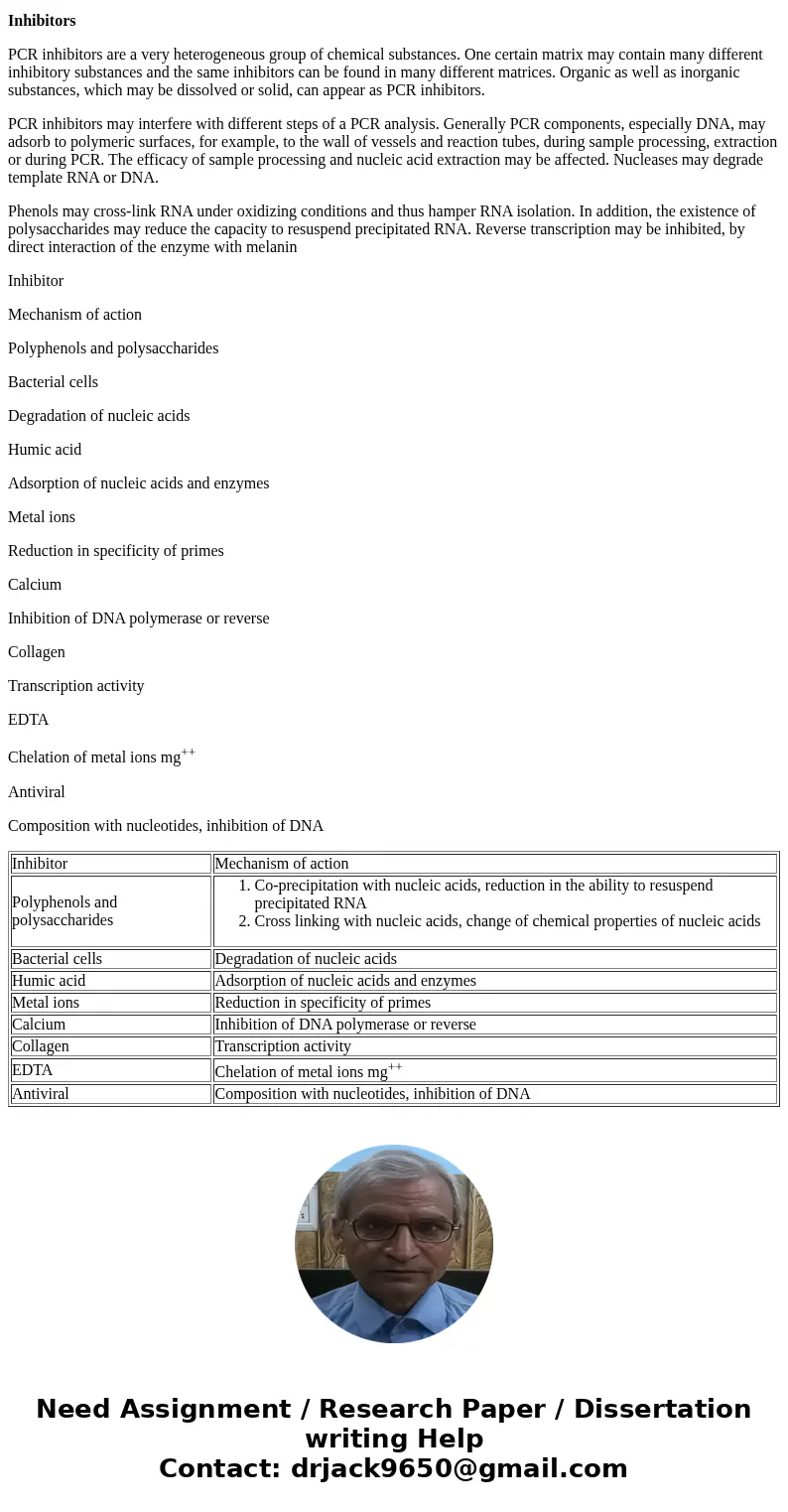What would happen to your data if you have the presence of a
What would happen to your data if you have the presence of an inhibitor in your sample? List 3 things that can inhibit PCR.
Solution
The polymerase chain reaction (PCR) has become one of the most powerful molecular biological tools. The PCR is increasingly used as the standard method for detection and characterization of microorganisms and genetic markers in a variety of samples. PCR may be used for diagnosis of infectious or hereditary diseases and for genetic analyses in a large variety of samples. The PCR is a very rapid and sensitive method, in which genomic DNA is exponentially amplified by a DNA polymerase using specific primer molecules.
Although, the method is prone to inhibiting by a variety of substances, which may be present in the analyzed sample and which may affect the sensitivity of the assay or even lead to false-negative results. The PCR inhibitors represent a diverse group of substances with different properties and mechanisms of action.
Inhibitors
PCR inhibitors are a very heterogeneous group of chemical substances. One certain matrix may contain many different inhibitory substances and the same inhibitors can be found in many different matrices. Organic as well as inorganic substances, which may be dissolved or solid, can appear as PCR inhibitors.
PCR inhibitors may interfere with different steps of a PCR analysis. Generally PCR components, especially DNA, may adsorb to polymeric surfaces, for example, to the wall of vessels and reaction tubes, during sample processing, extraction or during PCR. The efficacy of sample processing and nucleic acid extraction may be affected. Nucleases may degrade template RNA or DNA.
Phenols may cross-link RNA under oxidizing conditions and thus hamper RNA isolation. In addition, the existence of polysaccharides may reduce the capacity to resuspend precipitated RNA. Reverse transcription may be inhibited, by direct interaction of the enzyme with melanin
Inhibitor
Mechanism of action
Polyphenols and polysaccharides
Bacterial cells
Degradation of nucleic acids
Humic acid
Adsorption of nucleic acids and enzymes
Metal ions
Reduction in specificity of primes
Calcium
Inhibition of DNA polymerase or reverse
Collagen
Transcription activity
EDTA
Chelation of metal ions mg++
Antiviral
Composition with nucleotides, inhibition of DNA
| Inhibitor | Mechanism of action |
| Polyphenols and polysaccharides |
|
| Bacterial cells | Degradation of nucleic acids |
| Humic acid | Adsorption of nucleic acids and enzymes |
| Metal ions | Reduction in specificity of primes |
| Calcium | Inhibition of DNA polymerase or reverse |
| Collagen | Transcription activity |
| EDTA | Chelation of metal ions mg++ |
| Antiviral | Composition with nucleotides, inhibition of DNA |


 Homework Sourse
Homework Sourse